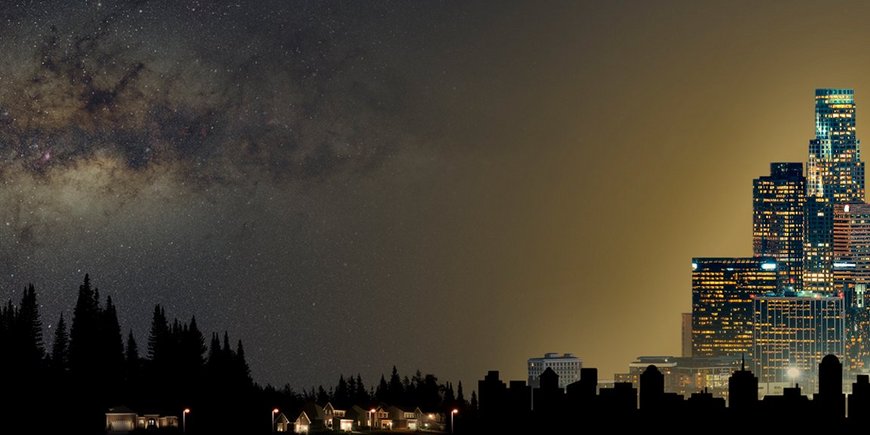Skies are brightening at a rate of almost 10% per year, resulting in the visibility of stars in the night sky declining faster than previously predicted, a recent study showed.
Since humans first emerged around two million years ago, stars have been at the centre of their existence.
From playing a pivotal role in helping them navigate Earth to guiding them in more spiritual and emotional ways, it is almost impossible to imagine their absence. While the stars themselves may not disappear, their visibility in the sky is already decreasing.
“Skyglow affects both diurnal and nocturnal animals and also destroys an important part of our cultural heritage,” said Constance Walker, co-author of a recent study published in the journal Science, which indicated that the night skies are rapidly getting brighter due to artificial light, with negative effects on stargazing and astronomy.
Researchers found that the exponential artificial growth of skyglow over the 20th century is a result of population growth, new technologies, and the expansion of towns and cities. The rate at which stars are becoming invisible to people was especially dramatic in urban environments.
The change in star visibility can be explained by an average increase of 9.6% per year in the sky brightness, a rate of change faster than satellite measurements of artificial light emissions on Earth at first suggested. Skyglow will likely double in less than eight years.
“If the development were to continue at that rate, a child born in a place where 250 stars are visible will only be able to see 100 stars there on their 18th birthday," said Christopher Kyba, lead author of the study.
Involving citizens
Researchers used the observational power of people across the world as the real change in skyglow over time can't be accurately measured by satellites, the only current sensors that monitor the entire Earth, as they do not have sufficient accuracy or sensitivity.
The study analysed 51,351 citizen scientist observations of stars visible to the naked eye from 19,262 locations worldwide between 2011 and 2022 as part of the “Globe at Night” Citizen Science Project.
With a set of eight star charts showing the sky under different levels of light pollution, people indicated what they were able to see. Researchers then created a model that related the number of visible stars to the brightness of the night sky.
There was a discrepancy between results from human observation and satellite measurements, probably due to changes in lighting practices. "Satellites are most sensitive to light that is directed upwards towards the sky. But it is horizontally emitted light that accounts for most of the skyglow," Kyba explained.
Related News
- How light pollution in Europe increased over 10 years due to LEDs switch
- Belgium joins NASA mission to defend Earth from asteroids
“So, if advertisements and facade lighting become more frequent, bigger or brighter, they could have a big impact on skyglow without making much of a difference on satellite imagery." The switch to white light-emitting diodes (LEDs), which emit much more blue light, likely also plays a role.
Researchers did note that the number of participants from different regions of the world "determines the significance of spatial and temporal trends," adding that people from North America and Europe had the largest participation in the experiment.
“The most data comes from the regions of Earth where skyglow is currently most prevalent. That’s useful, but it means that we can’t say much about skyglow change in regions with few observations,” Kyba said.
"If we had broader participation, we could identify trends for other continents, and possibly even for individual states and cities," Walker concluded.

